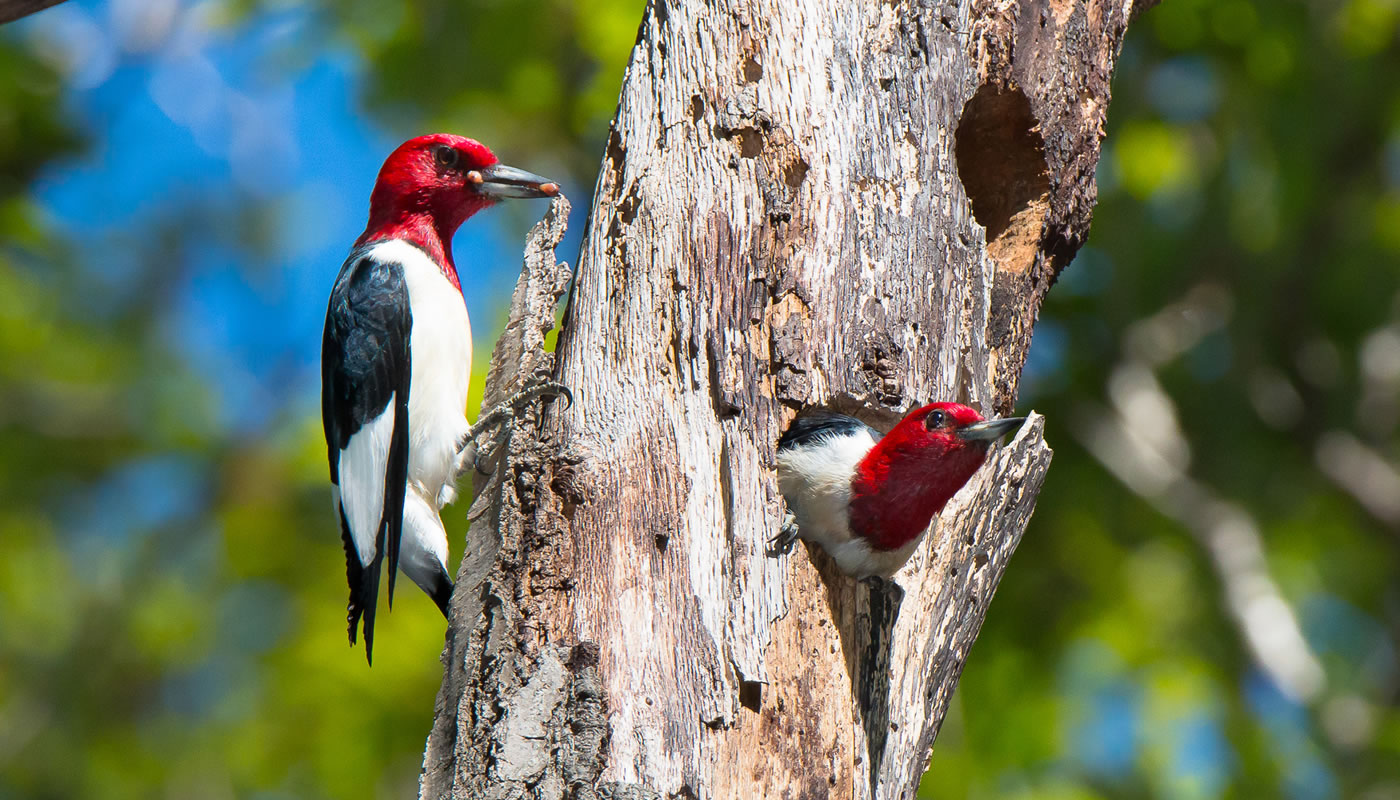If you’ve ever walked along a trail in a forest preserve, you’ve probably heard the fast drumming coming from up above. That noise is coming from woodpeckers, who are in search of food, communicating with others of their kind via “drumming,” or trying to build the perfect nesting site. In the US, there are 22 different native woodpecker species, and seven native woodpecker species can be found in Cook County:
- Northern Flicker
- Pileated Woodpecker
- Red-headed Woodpecker
- Downy Woodpecker
- Hairy Woodpecker
- Yellow-bellied Sapsucker
- Red-bellied Woodpecker
“One of the great results that came out of the Bird the Preserves initiative from the bird conservation stand point is that all seven native species were detected during the year at 10 different participating preserves,” explains Edward Warden, a naturalist aide at Sand Ridge Nature Center. “And that’s not to say all seven wouldn’t also be spotted at preserves not part of the Big Year competition.”
During the course of the competition, participating teams recorded sightings of all seven native Cook County woodpeckers at McClaughry Springs, Thatcher Woods, Sand Ridge Nature Center, Little Red Schoolhouse Nature Center, Sagawau Environmental Learning Center, Miller Meadows, Salt Creek, Paul Douglas, Busse Woods and Spring Creek.
“Woodpeckers are amazingly adapted birds for a very specific role, and that’s drilling into wood,” says Warden. “This is something that humans can’t accomplish without power tools. Most other birds don’t have the have the capability of doing this…most other creatures in the world do not have the ability to basically destroy, break through and cut through wood the way woodpeckers do.”
According to Warden, the anatomical adaptations that allow woodpeckers to perform this task include skull compactness to prevent their brains from getting concussions, a special spongy type of bone to brace the birds for impact, and very stiff and rigid tail features that allow the birds to prop themselves up.
“When these birds are drilling holes, they’re often building nest sites. Unlike other birds which maybe gather various materials up in a tree, woodpeckers take that one step further and literally build in a tree,” explains Warden. “Woodpeckers may also drill multiple holes, and then choose which one is best to nest in. These woodpeckers are then also creating homes for other birds and animals. For example, screech owls and flying squirrels actually use old woodpecker holes as their nesting sites.”
While finding a secure nesting site is a major reason for the drilling, woodpeckers are also searching for food which includes insects like ants and wood-boring beetles.
While a woodpeckers may cause concern for some, Warden stresses that their unique activity is actually good for the local environment. Beyond providing potential homes for other species of birds and wildlife, woodpeckers help rid trees of potential problematic insects.
“While woodpeckers can sometimes be problematic for homeowners, they also do a great deal of good. You may not notice that there are destructive insects in your tree, but woodpeckers do and they are there to feast on them. Woodpeckers are our buddies in a lot of ways. They are part of a healthy ecosystem,” says Warden.

